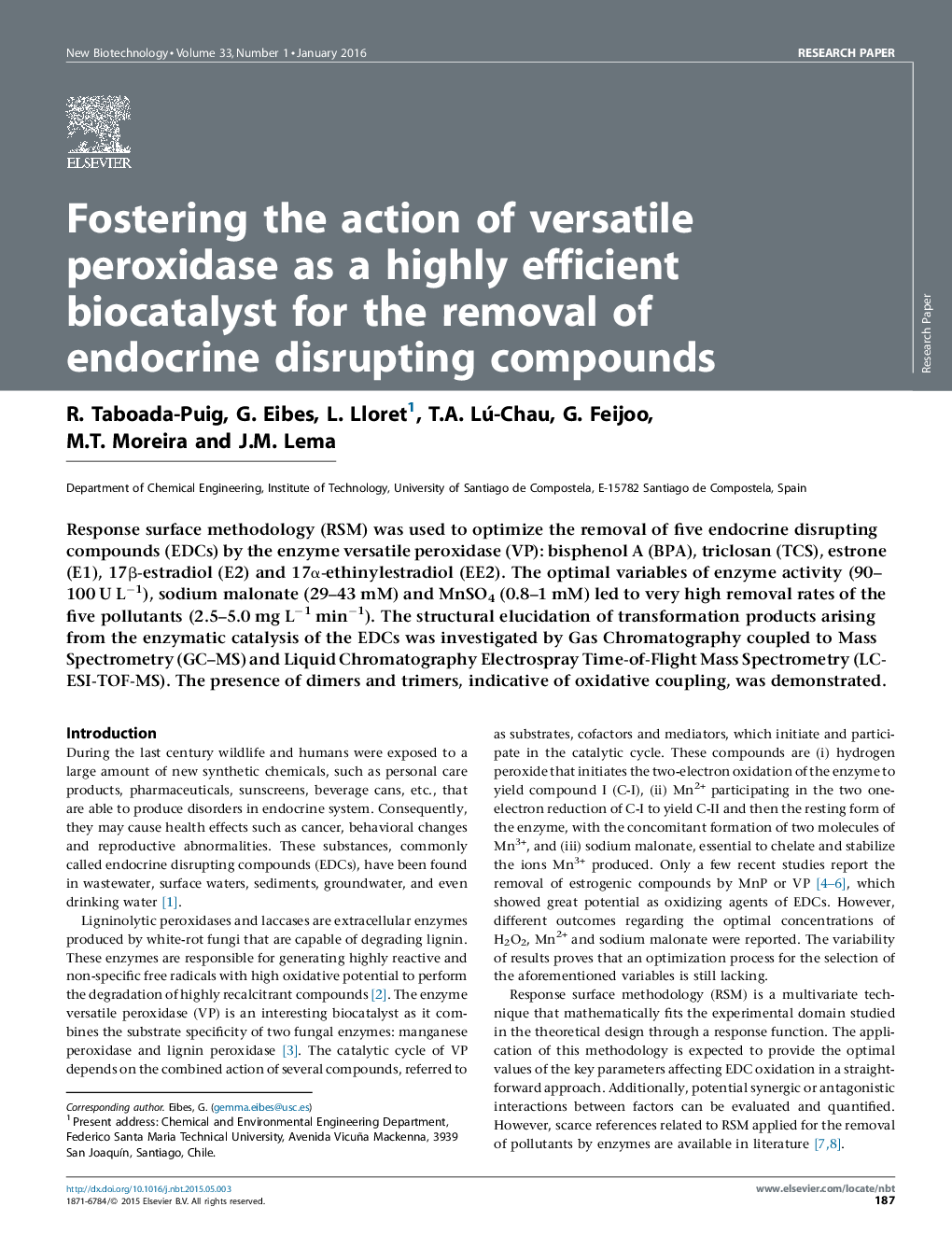| کد مقاله | کد نشریه | سال انتشار | مقاله انگلیسی | نسخه تمام متن |
|---|---|---|---|---|
| 33051 | 44954 | 2016 | 9 صفحه PDF | دانلود رایگان |

• Versatile peroxidase was highly efficient on the removal of endocrine disruptors.
• Response surface methodology was a useful tool for the removal optimization.
• Different analytical techniques were used to investigate transformation products (TP).
• The presence of dimers and trimers as TP was indicative of oxidative coupling.
Response surface methodology (RSM) was used to optimize the removal of five endocrine disrupting compounds (EDCs) by the enzyme versatile peroxidase (VP): bisphenol A (BPA), triclosan (TCS), estrone (E1), 17β-estradiol (E2) and 17α-ethinylestradiol (EE2). The optimal variables of enzyme activity (90–100 U L−1), sodium malonate (29–43 mM) and MnSO4 (0.8–1 mM) led to very high removal rates of the five pollutants (2.5–5.0 mg L−1 min−1). The structural elucidation of transformation products arising from the enzymatic catalysis of the EDCs was investigated by Gas Chromatography coupled to Mass Spectrometry (GC–MS) and Liquid Chromatography Electrospray Time-of-Flight Mass Spectrometry (LC-ESI-TOF-MS). The presence of dimers and trimers, indicative of oxidative coupling, was demonstrated.
Journal: New Biotechnology - Volume 33, Issue 1, 25 January 2016, Pages 187–195